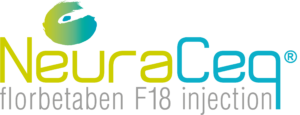Safety Information
Important Safety Information (US)
For safety information outside of the US, visit: Healthcare Professionals Non-US – Neuraceq® Florbetaben F-18 Injection | Life Molecular Imaging
Neuraceq® is indicated for Positron Emission Tomography (PET) of the brain to estimate amyloid beta neuritic plaque density in adults with cognitive impairment for:
- Evaluation of Alzheimer’s disease and other causes of cognitive decline
- Selection of patients who are indicated for amyloid beta-directed therapy as described in the prescribing information of the therapeutic products
Risk for Image Misinterpretation and Other Errors
Errors may occur in the estimation of brain amyloid beta neuritic plaque density during Neuraceq® image interpretation [see Clinical Studies (14)]. The use of clinical information in the interpretation of Neuraceq® images has not been evaluated and may lead to an inaccurate assessment. Severe brain atrophy as well as motion artifacts that result in image distortion may limit the ability to distinguish gray and white matter on a Neuraceq® scan. Perform image interpretation independently of the patient’s clinical information. For cases where there is uncertainty as to the location of cortical signal, use co-registered anatomical imaging to improve localization of signal [see Dosage and Administration (2.4)].
Radiation Risk
Neuraceq® contributes to a patient’s overall long-term cumulative radiation exposure. Long-term cumulative radiation exposure is associated with an increased risk of cancer. Ensure safe drug handling to protect patients and health care providers from unintentional radiation exposure. Advise patients to hydrate before and after administration and to void frequently after administration [see Dosage and Administration (2.1, 2.2)].
For reporting of adverse events, please send us an email by clicking here, or use the FDA Medwatch reporting form (for adverse event reporting)

